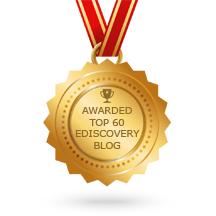There is a significant difference between merely using technology and using technology efficiently and effectively. Continuing my series of looking into the NZ discovery reforms, I will look at how the effective use of technology has been fundamental in comparative global discovery reforms.
In addition to the new obligations of cooperation and proportionality in the NZ reforms, parties are now expected to cooperate to“ensure technology is used efficiently and effectively” (Rule 8.2 (2)(c)). With the Rules now expecting a more proportionate approach to discovery, there will be more importance placed on how technology is used to achieve this.
How have other jurisdictions embraced technology?
We have seen other jurisdictions promote the use of technology to assist parties take a more proportionate approach to discovery.
Rule 8.2 (2)(c) compares with the UK E-Disclosure Practice Direction (PD31B), which says “technology should be used in order to ensure that document management activities are undertaken efficiently and effectively”. PD31B (Paras 8 and 9) then goes further – “Discussions between the parties before the first Case Management Conference in relation to the use of technology and disclosure”. This is very comparable to the requirements in the Discovery Checklist in the new reforms in NZ which all parties must have addressed prior to the first case management conference (Rule 8.11).
The focus of the Australian Federal Court Practice Note CM6 – Electronic Technology in Litigation is on how technology should be used throughout the litigation process. CM6 specifies that “it is expected that consideration will be given to the use of technology for:
a) creating lists of discoverable documents;
b) giving discovery by exchanging electronically stored information;
c) inspecting discovered documents and other material;
d) lodging documents with the Court;
e) delivering Court documents to, and otherwise communicating with, each party; and
f) presenting documents and other material to the Court during a trial.”
The focus in both the UK and Australia is very similar to the new reforms in New Zealand in the way they encourage parties to cooperate over the use of technology, and cooperation that occurs at an early stage before unnecessary costs are incurred.
Technology is not always used effectively
I know from my experience that the number of lawyers embracing technology is continuing to grow. Whilst this is a positive development, when it comes to discovery many lawyers continue to operate practices that they are familiar with. I often find some lawyers still continue to work in the same method as a paper based review, as they often just perform a page turn exercise on screen, in the same way they would review documents in paper in a room. Obviously this approach is not taking full advantage that technology can bring – technology needs to be understood as the solution, not the problem.
This issue is usually due to lawyer’s expertise being with the law and not the technology – some would argue this is the way it should be. I often find that lawyers just need a bit of guidance to get more out of the technology. Without the right advice and guidance, there can be many unnecessary costs associated with how technology is used. Much of the work that I do shows lawyers how they can use technology to assist them work more effectively, whilst putting them at ease about the benefits that technology can bring to their practice.
The more parties are prepared to embrace technology the more effective these discovery reforms will be. Technology can assist parties from each aspect of the electronic discovery process from identification of information through to the presentation in a courtroom, although the main advantage is the cost benefits it can bring at the initial stages – far above simply turning documents into an electronic format for exchange. Looking at cost implications the equation is simple, the fewer documents that lawyers have to review, the more cost effective discovery will be.
Reduce the volume – reduce the documents for lawyers to review – reduce the cost!
The document review continues to be the largest cost of the discovery process. Technology can significantly accelerate the document review, as there are numerous technologies available, much of which can save lawyers (and their clients), thousands of dollars, as well as providing more accurate results (a fact that is often lost). For the larger matters it is no longer sustainable to perform a human review of every document, this is where the clustering and prioritisation technologies (as mentioned in the Discovery Checklist (Para 3.1(ii)), should be investigated. The Discovery Checklist introduces a framework where these technologies can be more readily explored. On the larger matters, the utilisation of these technologies will continue to be the only effective way to proportionately conduct discovery.
Obviously this is a very evolving area as more sophisticated technology is emerging all of the time, which has got to be a positive for the legal industry as it allows parties to be able to respond to their discovery obligations more quickly, accurately and cost effectively. In future posts I will look further into document review techniques, as much of my work involves how I can assist lawyers become more efficient in their review
Promoting the effective use of technology has been a key part of global discovery reforms. Ensuring technology is used efficiently and effectively should facilitate the ability to carry out a more proportionate and cost effective discovery process.
Contact us today for further information, or if you want to know what the proposed rules could mean for you.

